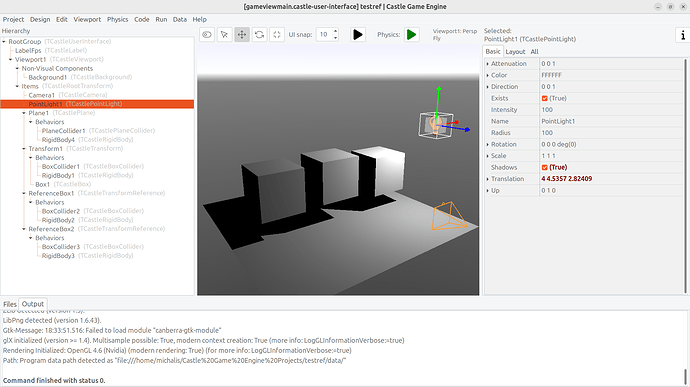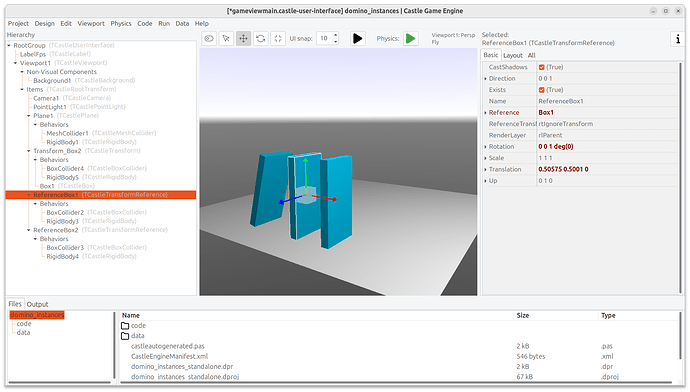Hi there!
I’ve made a simple falling domino effect. Who doesn’t like falling dominoes? The test can be seen on the first video. All dominoes are individual boxes with behaviors, and works great - as great as a simple demo could ![]()
However, I decided to replace one of domino’s TCastleBox with a TCastleTransformReference. With a Reference property set to ‘OriginalPiece’ (which is just one of TCastleBox). Now, the “clone” (TTransformReference object) behaves porperly, even if I add more of them. However, the OriginalPiece acts very strange.
So I’ve made another simple project to replicate it, and the result is the same. OriginalPiece doesn’t know what to do, so it either falls through the floor, sometimes it manages to rotate and hit the other dominoes.
On the video the 2nd and 3rd objects are “clones” (TCastleTransformReference for short) and their physics work as expected in all scenarios so far.
I didn’t debug it yet. Maybe there’s a known workaround, maybe that’s a known issue.




